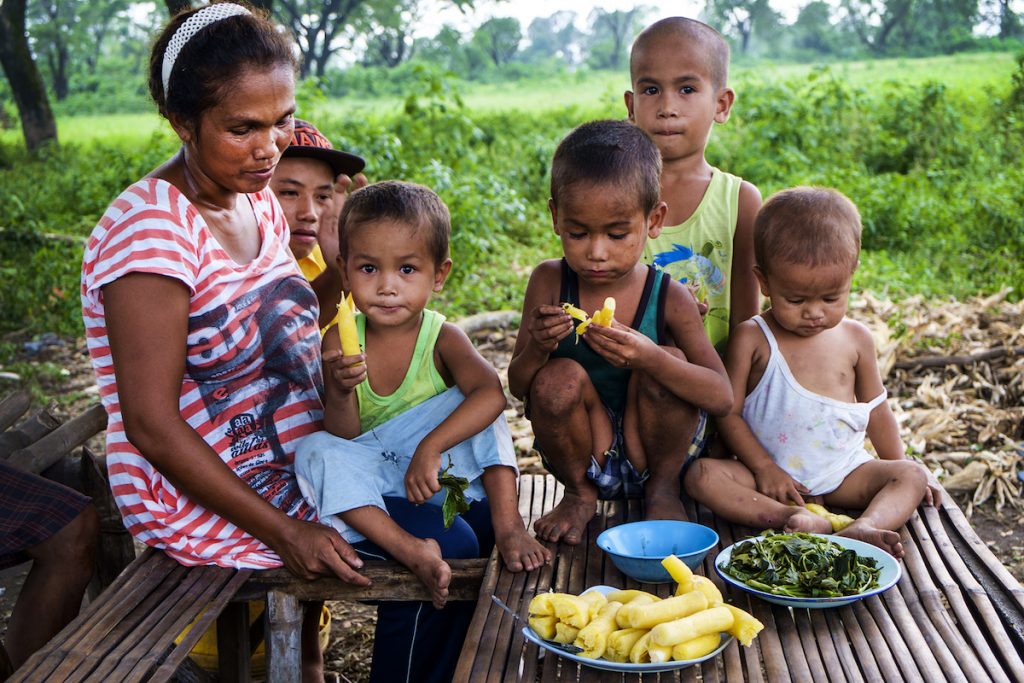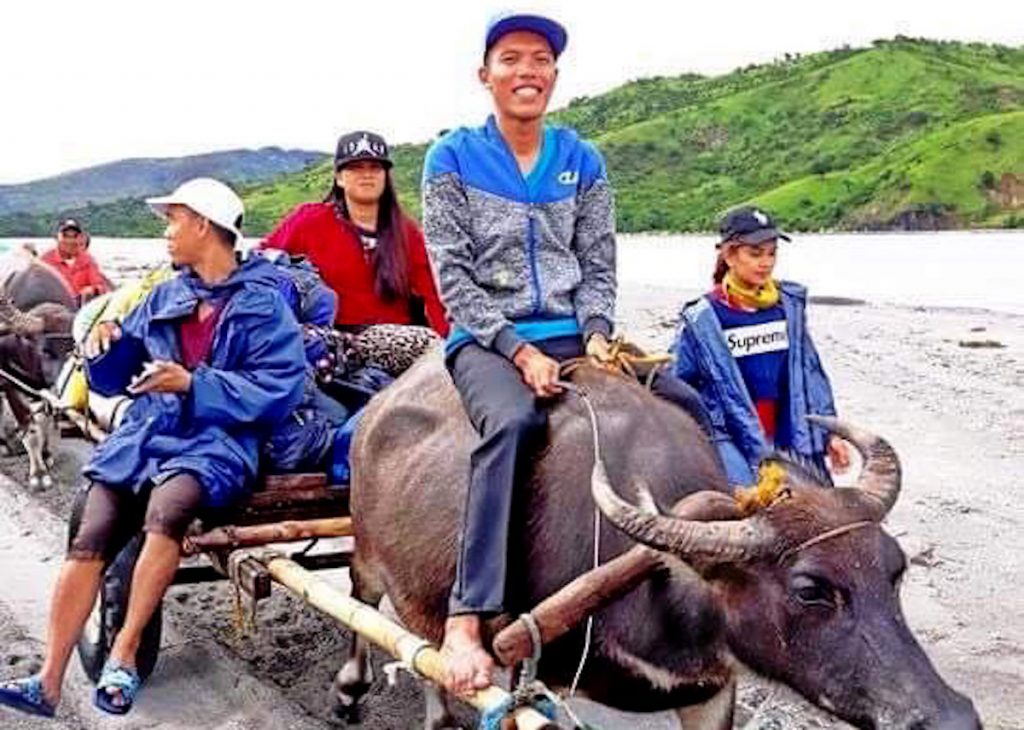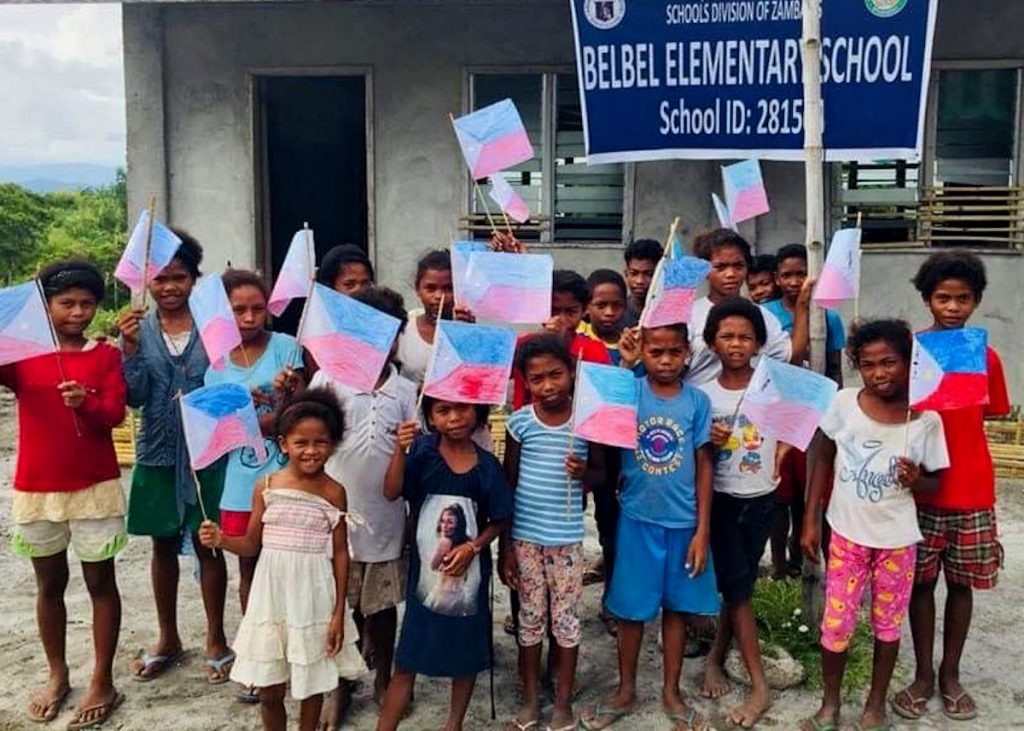A sea spirit called Bacobaco can transform into a giant turtle that spits fire.
One day, spirit hunters were after Bacobaco who ran away into the mountains and dug a hole on its peak.
For three days, the sea spirit howled in anger from the mountain top, spewing rocks, mud, and fire, causing the earth to tremble.
This is one version of the many stories about Mount Pinatubo’s eruption in 1991.
The real story started on July 16, 1990, when a magnitude 7.8 earthquake struck about 100 km northeast of the mountain on the island of Luzon in the Philippines.
The earthquake caused a landslide and a short-lived increase in steam emissions from a preexisting geothermal area, but otherwise the volcano continued its 500-year-old slumber undisturbed.
In March and April 1991, however, molten rock rising toward the surface from more than 32 km beneath the mountain triggered small earthquakes and caused powerful steam explosions.
Thousands of small earthquakes followed through April, May, and early June, and many thousand tons of noxious sulfur dioxide gas were emitted by the volcano.
On June 12 that year, millions of cubic meters of gas-charged magma reached the surface and exploded in a spectacular series of eruptions.
Since then, Mount Pinatubo became a symbol of nature’s wrath.
But not for the indigenous Aeta tribes who live in the shadow of the mountain since time immemorial. Mount Pinatubo is the tribes’ home. It is their sanctuary.

The Aetas continue to live with the rhythm of the mountain where change is constant with the coming of the seasons.
It is a rhythm that was changed, at least in the village of Philip Capellan, an Aeta who was born in a “resettlement area” in a valley near the mountain.
“Being raised in the lowland somehow made things accessible for me,” said the 25-year-old who studied to be a teacher.
It was not, however, easier. “The Aetas are isolated especially when it comes to education,” he said.
“We always try our best to learn, but there are really people who look at us differently,” said Philip. “Sometimes, I can’t really help but also be ashamed that I am [a tribal person],” he added.
Eventually, Philip got a scholarship from the National Commission on Indigenous Peoples and became a teacher.
“I knew I wanted to teach in the community, to give back to my people, but I prayed that I won’t be assigned to Belbel because I heard a lot how difficult it is to live there,” said the young teacher.
To reach Belbel, one has to cross rivers and walk for eight hours. The community, which is surrounded by freshwater springs, consist of a few dozen huts made of bamboo and grass.
In 2017, fate seemed to tease Philip when he was assigned to Belbel Elementary School.
“During my first year, I really cried. I realized how the community was deprived of access to their rights,” he said.
Philip said the school, despite being recognized by the Department of Education since 2016, does not have a building of its own.

Classes are held in an old structure owned by a non-government organization for its adult literacy program.
Philip and the other teachers have to spend their own money for renovations.
In 2018, the school transferred to a “multi-purpose building” built by the local government. Still, the teachers continued to shoulder the renovation of the structure.
“The government’s promise to build a school building remains a proposal because contractors refuse to come because of the remote location,” said Philip.
To reach the school, Philip and five other teachers have to ride a sled pulled by a carabao, a domestic swamp-type water buffalo native to the Philippines, to cross rivers.
When there are no available carabaos, the educators would walk for eight hours to reach the community.
“No matter how used you are to the routine, it really gets tiring because we walk on lahar,” said Philip.
Lahar comes from volcanic mudflow that was spewed by Mount Pinatubo. It is a lethal mixture of water and tephra and have the consistency of wet concrete.
When they get tired, Philip and his companions would have to sleep in the open.
“There are times when we see a shelter for animals, so we share it with them, or if none, we just sleep on the road,” he said.
For three years now, Philip travels to the village twice a week. He said it has become a “passion” for him already. It is now his “mission.”
With a degree in education, the young man could have easily gained employment in the city, or at least in the lowlands.
But he said he can’t turn his back to the desire of his heart. “I pity the children. They can’t read nor write. Why should I abandon them?” he said.
“I am an [indigenous person], I know how it feels to be discriminated, to be deprived of opportunities,” said Philip.

With the coronavirus pandemic, Philip and the other teachers face a new challenge.
The education department announced that classes will start on Aug. 24 using “distance learning” through “online and modular teaching methods.”
But there is no internet or mobile phone signal in the tribal communities. The children also cannot afford to buy the gadgets for modular learning.
“The Department of Education said it will send printed modules, but until now, we have not received anything,” said Philip who took the initiative to print the education materials.
The materials are supposed to be used by parents to homeschool the children during the pandemic when teachers cannot go to school.
“That’s another problem,” said Philip. Most parents cannot read or write.
The teachers will still have to visit the community for a “quick face-to-face” with the children and the parents to explain the modules.
Philip said they might even go house-to-house to monitor the progress of the children. “The burden is worse on us teachers,” he said.
As of this week, 85 children have already enrolled in Belbel Elementary school, but Philip said he expects the number of pupils to decrease by the middle of the school year.
“Sometimes, children give up because they have to walk for two hours from home to school, but in most cases, they quit to get married, especially the girls,” he said.
Child marriage is prevalent in most, if not all, indigenous communities in the country. Philip said some of his students usually get married as early as 13 years old.
He said the tribes follow traditions and allow their daughters to marry early for the dowry. “They feel that even at a young age, daughters should contribute to the family,” said Philip.
“It is one painful reality I face,” he said.
“There are students who told me they didn’t want to marry and would want to study, but they can’t do anything because of our tradition.”
That’s why Philip said education is important for tribal people.
“Sometimes, we are being taken advantage of by those who know better than us,” he said.
“It is important that [we] are educated because even if there’s a law for us, we can’t feel that we are protected by it,” said the teacher.
In 1997, Congress passed the Indigenous People’s Rights Act to “recognize, protect, and promote the rights of Indigenous Cultural Communities or Indigenous Peoples.”
But Philip said that even with the law the reality on the ground is different.
“When you think about it, you can trace it down to education … In the world we are in, the law only works for the educated,” he said.
On Aug. 9, the world marked International Day of the World’s Indigenous Peoples. For Philip it was just another day as he prepares the long walk ahead to the village of Belbel.






